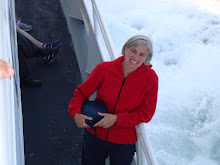
By Sarah Albee
ISBN: 978-0-8027-2077-1
Publisher: Walker & Company
FROM THE FLAP: Throughout the ages, the most successful civilizations were the ones who realized that everyone poops and they’d better figure out how to get rid of it! From the very first flushing toilet (invented way earlier than you would think) to the efficient Roman aqueducts (possibly inspired by the goddess of sewers!) to castles in the Middle Ages whose moats used more than just water to repel enemies, Poop Happened! traces human civilization through this revolting yet fascinating theme. Disgusting details about human hygiene give kids down and dirty answers to some enduring questions like:
Did lead pipes cause the fall of the Roman Empire?
How many toilets were in the average Egyptian pyramid?
How did a knight wearing fifty pounds of armor go to the bathroom?
Was poor hygiene the last straw before the French Revolution?
Did Thomas Crapper really invent the modern toilet?
How do astronauts “go” in space?
History will finally come out of the water closet in this exploration of how a human necessity shaped civilization from ancient times to the present. Bathroom reading has never been so engrossing!
AQUEDUCT RELAY RACES (Kinesthetic and Interpersonal)
Rome, and Edo(modern day Tokyo) used aqueduct to keep their water supplies free from waste which made their cities much cleaner and healthier than other cities in history. Divide the class into five teams. Give each person a twelve to eighteen inch piece of PVC pipe cut in half lengthwise. Each group should have one tennis ball. Each team needs to transport the tennis ball from the start line to the finish line without having the ball touch their hands or the floor/grass. If the ball falls or if it touches their hand, the team needs to go back to the start line. Special thanks to Matt Ettinger for this activity.
CITY PLANNERS (Visual/Spatial and Interpersonal)
Pair up students and ask them to pick a city mentioned in the book. Have one student draw a map of the city from the time period mentioned in the book while the other student draws a map of the modern day city. Maps should include information about waste treatment. Have the students present their maps and compare and contrast the two.
DIRTY DISEASES (Verbal/Linguistic, Visual/Spatial, and Interpersonal)
Poor hygiene and unsanitary conditions spread disease throughout Europe. Divide the class into five small groups and have them each research a specific disease during a certain time period. Ask them to create a poster about the disease that includes information on how the disease spread and how that specific civilization dealt with the public health threat. Posters should include a map. Afterwards have them present their posters and ask class members to provide constructive critique on the group’s poster and presentation.
FAVORITE FACT TIMELINE (Logical/Mathematical, Kinesthetic, and Interpersonal)
Important facts and dates are sprinkled throughout the text. Ask each student to write down their favorite fact and the date it happened on a piece of paper. Then have them line up in class in chronological order.
GUESS WHO? (Verbal/Linguistic and Interpersonal)
Fun facts about famous people abound in Poop Happened! Each student will choose a famous person in the book and write five clues about his or her person of choice. Then, the student will dress up as the famous person and read his or her clues in front of the class. The other students will try and guess who the identity of the dressed-up student.
BOOK BUDDIES:
-Canals and Aqueducts by Julie Richards
-City Planning in Ancient Times by Arthur Segal
-Sustainable Cities by Cheryl Jakab
-The Gross and Goofy Body Series by Melissa Stewart
-The World’s Deadliest Diseases by Tim O’Shei

No comments:
Post a Comment